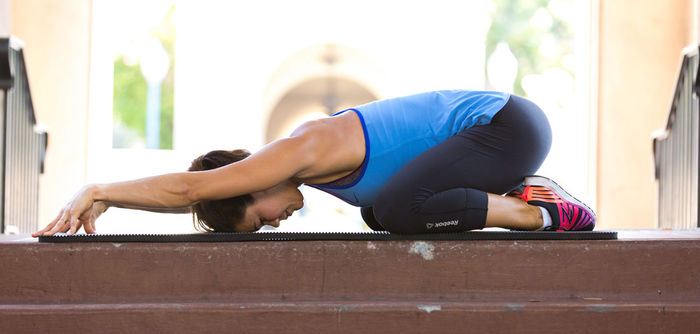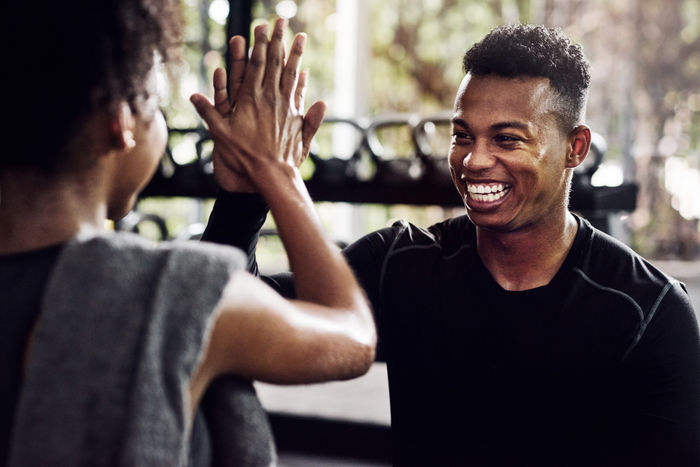Add this to your business card: “Holiday Fitness Coach.” Huh? It’s that scary time of year–Halloween kicks off the beginning of a holiday season anchored in enough candy, sweets and treats to leave your clients feeling like an anchor at the start of the New Year.
Many people act as if there’s nothing that can be done about this and that they are at the mercy of the junk food that surrounds us in the last two months of the year. What starts as too much leftover Halloween candy rolls right into overindulgence at Thanksgiving, followed by a month of Christmas cookies, cakes and candy. It’s a two-month hurricane of poor nutrition. You’re a fitness leader, however, so let’s lead your people to a new perspective and, as a result, new and improved choices.
You know how it goes…
A client comes in feeling exasperated and proclaiming, “I can’t believe how much I ate and drank at our holiday party. I couldn’t help myself. It’s only once a year and you’ve gotta live a little.” I know how you feel. Hearing this over and over makes me want to grow hair, just so I can pull it out. In this car wreck of a conversation, your clients play the role of hysterical victim. Through coaching, you can shift perspectives so that they take on the role of dispassionate, detached accident investigator.
Our objective is simple: Take the focus off of the behavior and instead examine what led to the choice.
Mess Up Better: Look Inside

When people mess up they are usually ruthlessly brutal and beat themselves up over it. This focus on the outcome and the aftermath usually leads to an endless cycle of repeated poor choices. And health and fitness suffers.
Here’s where you come in. In the scenario above, your role is to simply ask questions and allow the client to answer. Ask some variation of the following questions or create some of your own:
- How were you feeling about your health and fitness program before the party?
- Did you have any anxiety about the food and drink at the party before you got there? If so, why?
- Tell me what happens that leads to you making a choice that is not in line with your goals for your health.
- Have you noticed any particular triggers? For example, a certain food, person or thought that creates a reaction in you?
- How much of the choices you made are your responsibility and how much is pressure from co-workers, friends or family?
This can bring new awareness to where the trouble starts. Without this awareness, the pattern often repeats: a desire to do better in difficult situations, but failing, followed by ruthless self-criticism.
Mess Up Better: The Aftermath

It can also be valuable to have the client examine how he or she felt physically after eating or drinking too much or eating the wrong foods. Spending time noticing the bloated, headachy, sluggish, etc. feelings that almost always ensue with overindulgence helps clients make the connection between the bad feeling and the behavior in a more powerful way. Poor choices have good PR and most people only focus on the brief period when you feel good while drinking too much or eating too many sweets. Instead, bring the focus back to the much longer-lasting negative feelings—both physical and emotional—that follow. Continue the conversation by asking some variation of the following questions or a few of your own:
- What did you notice about how you felt the day afterward?
- Did you work out the day afterward? If so, how did that workout feel to you? How was your energy? Did you feel strong and capable?
- What thoughts and self-talk did you notice bouncing around your head the day after?
- Is there anything that you felt, either physically or mentally, that you absolutely want to avoid feeling again?
Does your client feel physically terrible after bad decisions Great. Celebrate this. Why? Because it makes the point that poor choices leads to feeling terrible. This also makes the converse true: good choices leads to feeling good. It’s a reminder that our bodies respond to what we do and it is up to us to ensure those responses are positive.
If your client is highly self-critical and negative, ask if he or she enjoys feeling that way. It will seem like an odd question, but if this is a recurring behavior pattern, the client is getting something positive out of the behavior that is outweighing the negative aftereffects. It is useful to help your client find out what that is.
The only mistakes worth making are the ones you learn from and some people can only learn by paying the high tuition to the University of Bad Experience. The worst thing one can do, of course, is to keep paying the high cost of that tuition without ever learning the lesson. A quote I heard once of unknown origin sums up the view of many people: “Success comes from good judgement. Good judgment comes experience. Experience comes from bad judgment.”
Wrap Up
Here is the take-home message for your clients: Don’t get down on yourself. Learn from yourself. And remember that our bodies are built from our habits rather than from a single day’s actions.




 by
by 









 by
by